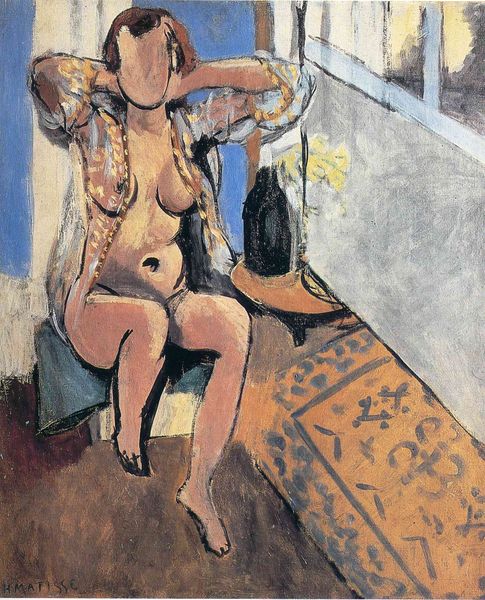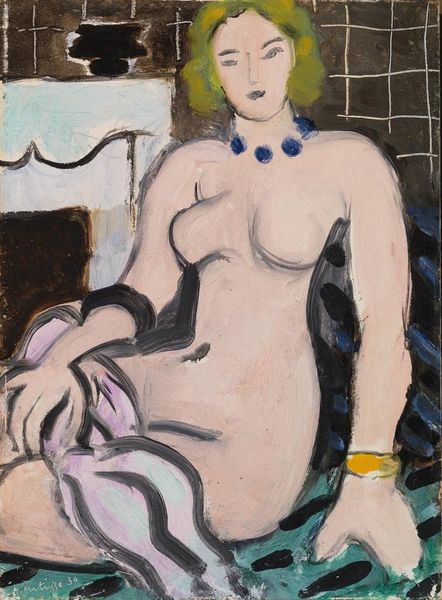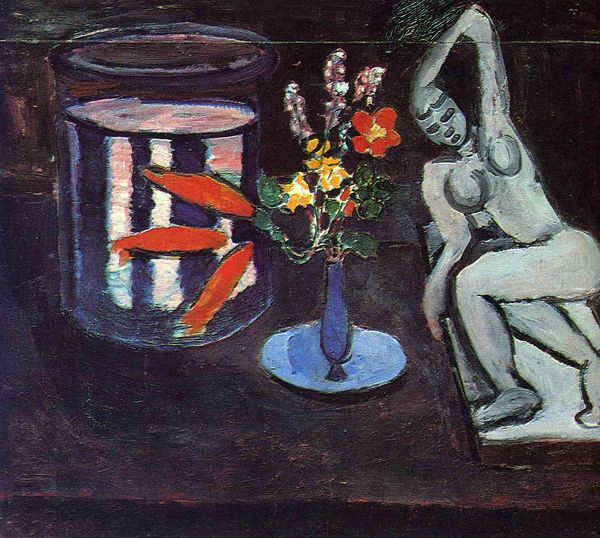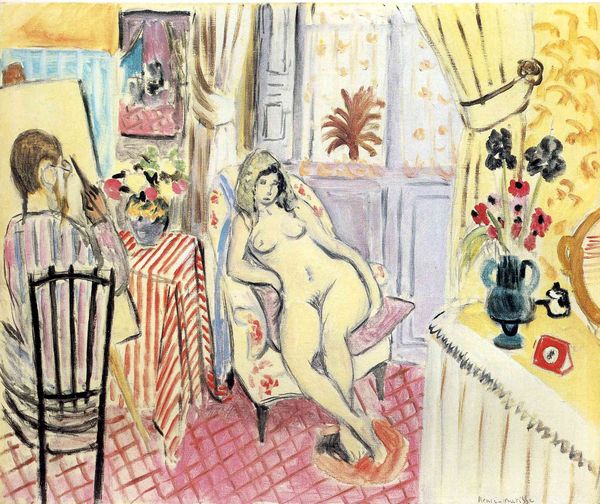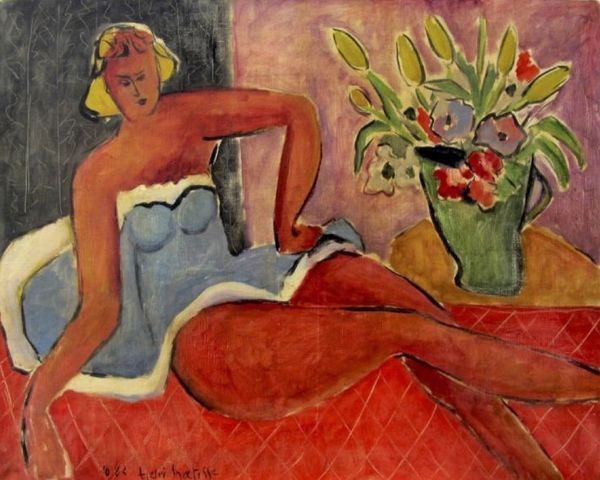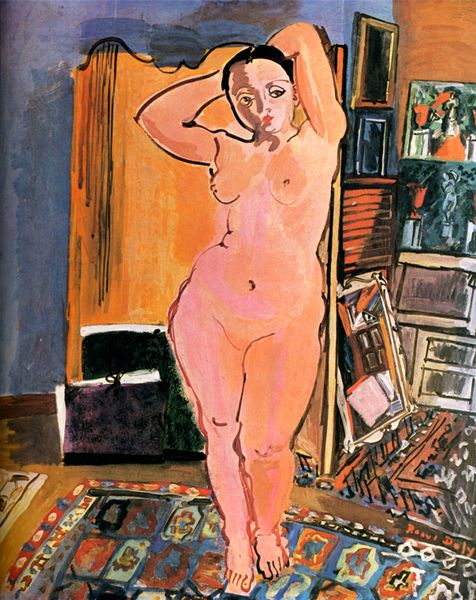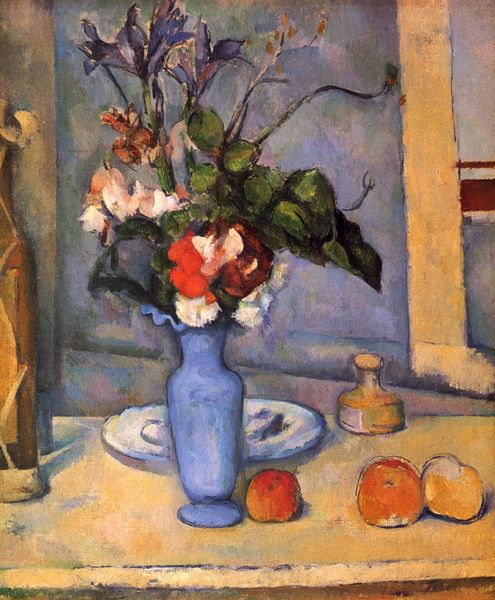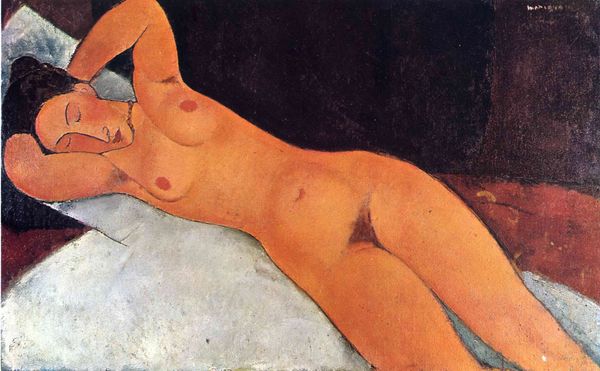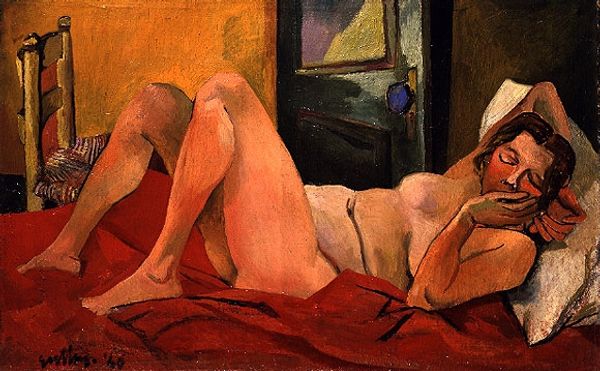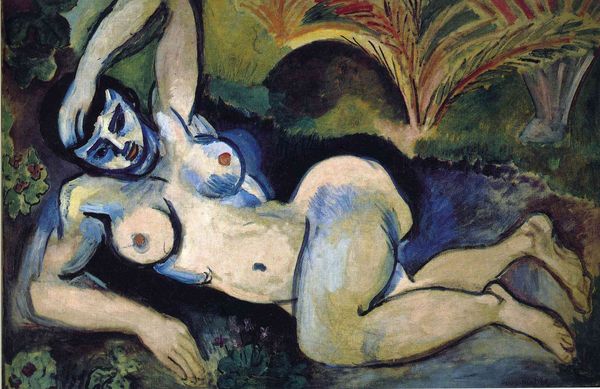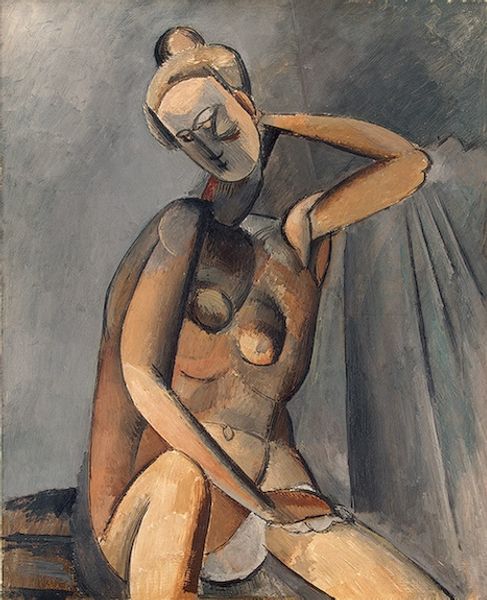
Dimensions: 113 x 87 cm
Copyright: Public domain US
Editor: So, here we have Matisse's "The Plaster Torso" from 1919, done in oil paint. It's got a sort of still life feel, but with the plaster torso it feels almost like he's representing art itself as a commodity. What are your thoughts when you look at it? Curator: I'm immediately drawn to the interplay of materiality here. Look at how Matisse presents the sculpted torso – an object born of a subtractive process – juxtaposed with the applied, additive nature of the oil paint itself. It's a dialogue about modes of production. How do the manufactured elements, like the factory-made vase, contrast with handmade art like paintings? Editor: I see what you mean. The vase is so mass produced. Do you think the flowers change this or are they another commodity? Curator: The flowers complicate it, don’t they? They’re organic, yet arranged, cultivated, consumed. Notice, too, how the canvas itself – a factory-produced surface prepared with gesso – acts as the very foundation for this interplay. It underscores how so-called 'high art' relies fundamentally on industrial processes. Where do you see evidence of materiality and production that challenges our traditional categories of "art" versus "not art?" Editor: Thinking about the desk, its a well crafted piece of furniture. Does that enter into the high art/ low art discussion, then? It seems the means of producing a useful object versus art object aren't so different. Curator: Precisely. Consider, also, the artist's labor itself. Each brushstroke is a physical act, a deliberate application of pigment derived from the earth. The canvas becomes a record of this labour, a testament to the artist’s own material engagement. Editor: I hadn’t thought about the painting as labor quite that way. The whole process involves extraction, manufacturing, distribution… and that’s just to get the materials ready to become a work of art! Curator: Indeed! The "Plaster Torso" reveals the commodification inherent not only in the subjects represented, but also in the very act of painting itself.
Comments
No comments
Be the first to comment and join the conversation on the ultimate creative platform.
